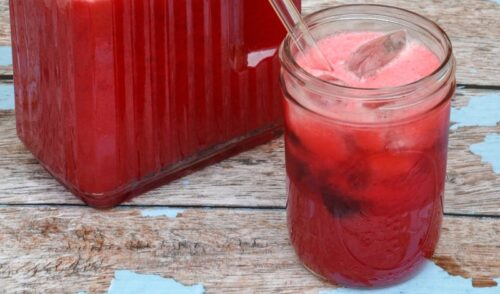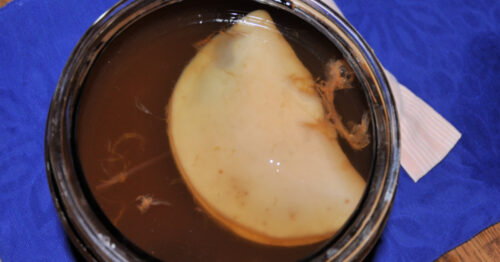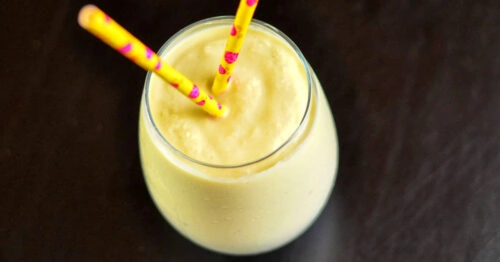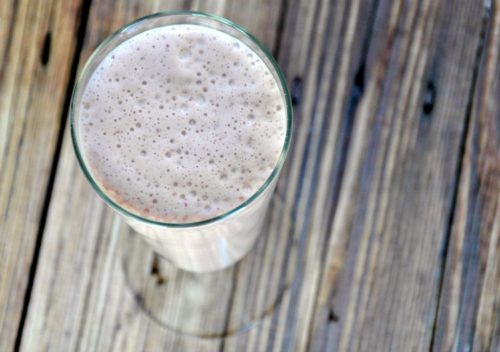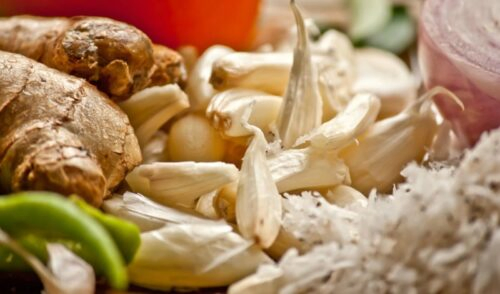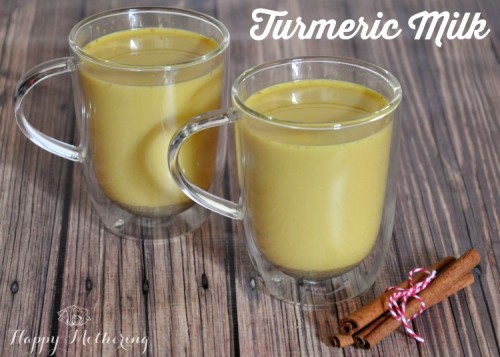Jump to Recipe
Learn how to make fermented orange juice with three simple ingredients in this easy cultured drink recipe.
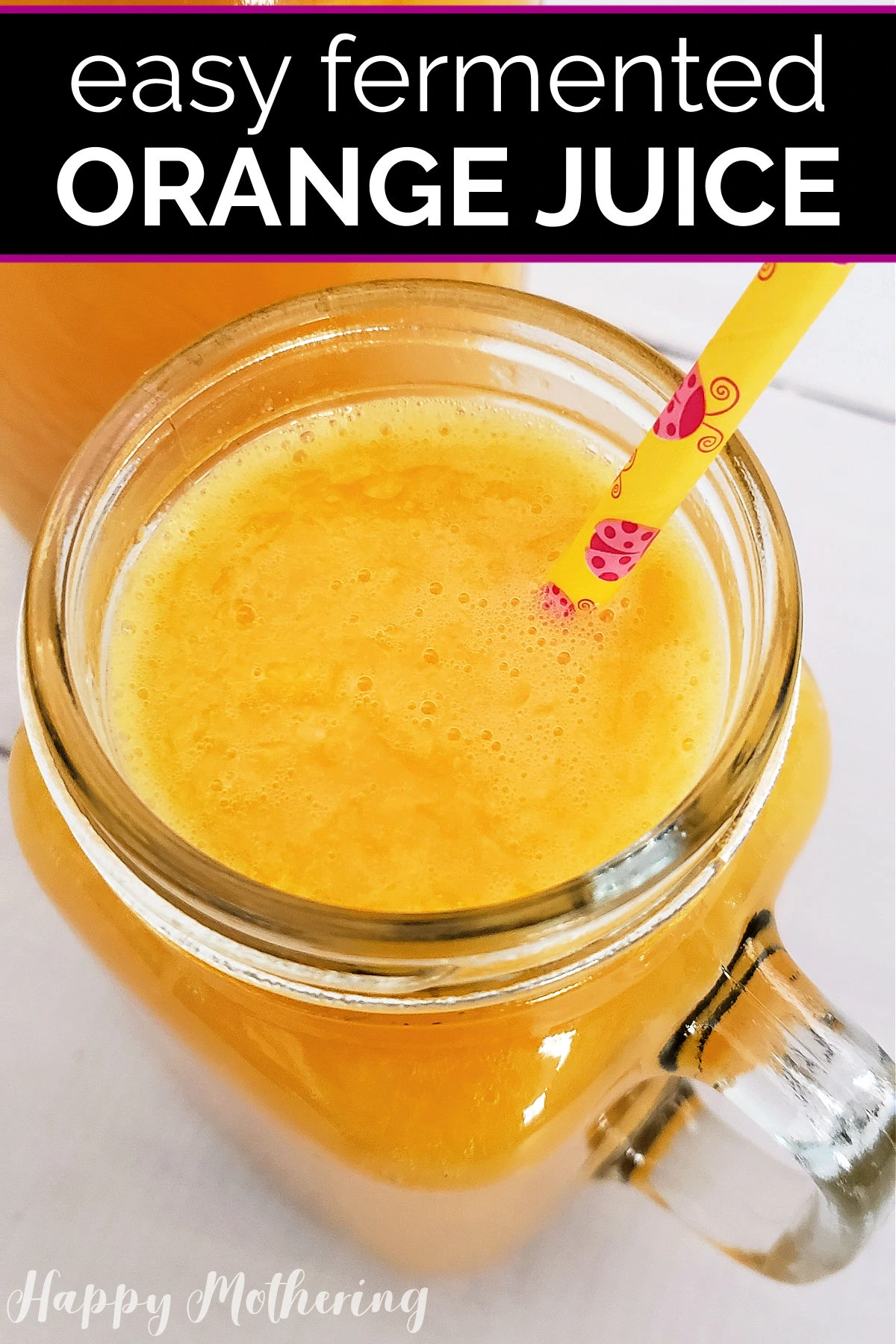
Squeezing orange juice can be fun for kids of all ages, and one of our favorite things to make when the girls were little was lacto-fermented orange juice. We love how the fermentation process adds sparkly bubbles to it!
While not as fizzy as soda pop and other carbonated beverages, this popular fermented beverage does get small bubbles. It’s fun to make and drink!
I make 2 quarts of orange juice to ferment at a time, but you can make more or less by doubling or halving the recipe.
- Ingredients and Equipment
- Step-by-Step: How to Make Fermented Orange Juice
- Tips for Making Fermented Orange Juice
- What does fermented orange juice taste like?
- Why drink fermented orange juice?
- What if it ferments too long?
- Where to get starter culture?
- Is starter culture necessary?
- Best type of orange to use?
- Why store bought OJ can’t be used
- Best temperature for fermenting orange juice
- Can you ferment other fruit juices?
- Uses for leftover orange peels
- Does fermented orange juice contain alcohol?
- Where to learn more about fermented foods?
- Fermented Orange Juice Recipe
- More Delicious Drink Recipes
Ingredients and Equipment
- 6 cups fresh-squeezed orange juice
- 4-6 tablespoons vegetable starter culture
- 1 cup filtered water
- Quart sized mason jars
- Whisk
Step-by-Step: How to Make Fermented Orange Juice
Follow these simple step by step instructions to learn how to make fermented orange juice the easy way.
Step 1: Squeeze Fresh Oranges
Begin by squeezing your fresh orange juice using your desired method and add about 3 cups of the juice to each mason jar.
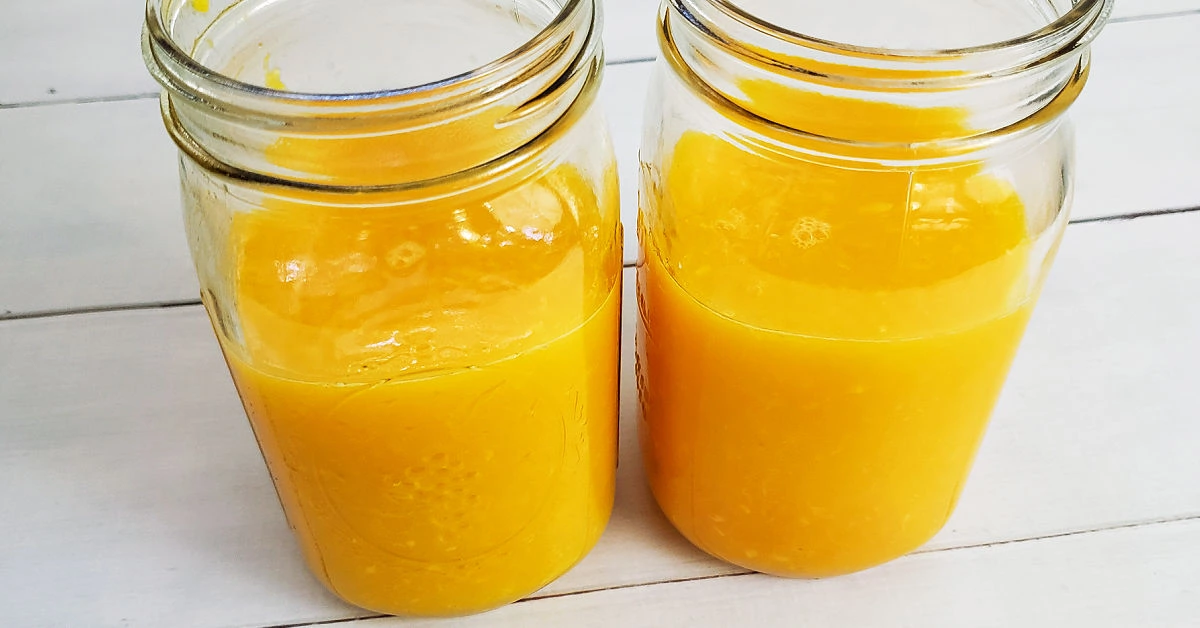
Step 2: Prepare Starter Culture
The next thing you need to do is to prepare your vegetable starter culture by following the package directions. This typically includes whisking the contents of a packet with warm water.
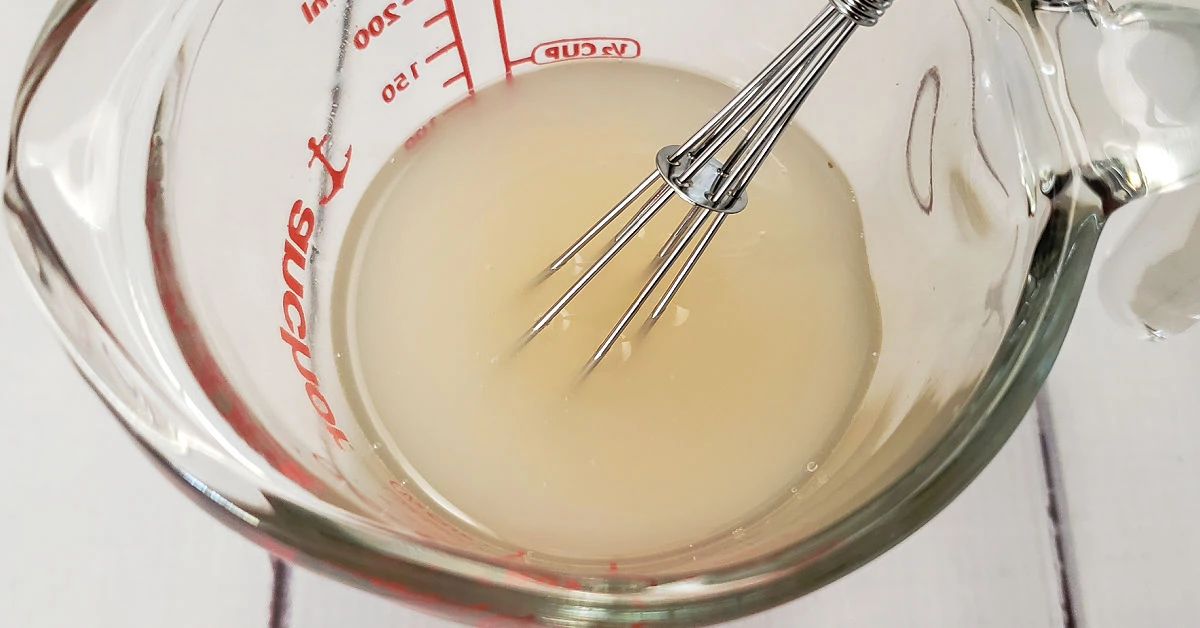
Step 3: Mix Starter and Water with Juice
Add about ½ cup of room temperature water and 2-3 tablespoons of the culture starter you made to each mason jar with the juice. Mix well.
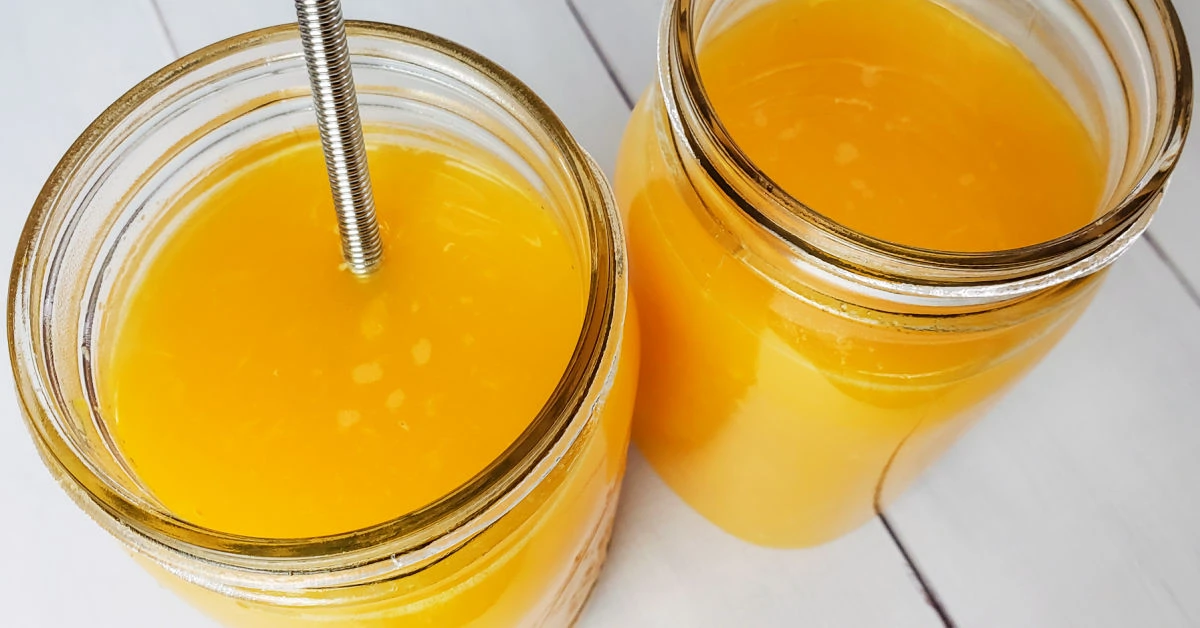
Step 4: Place Lid on Jar
Once it’s well mixed, you need to put the lid on the jar. Set the jar of juice somewhere warm, but out of sunlight, for 24-48 hours.
If this is your first time fermenting, it’s a good idea to put a towel under the jars in case too much pressure builds up and some juice escapes (this is why I typically leave about 1-inch of headspace).
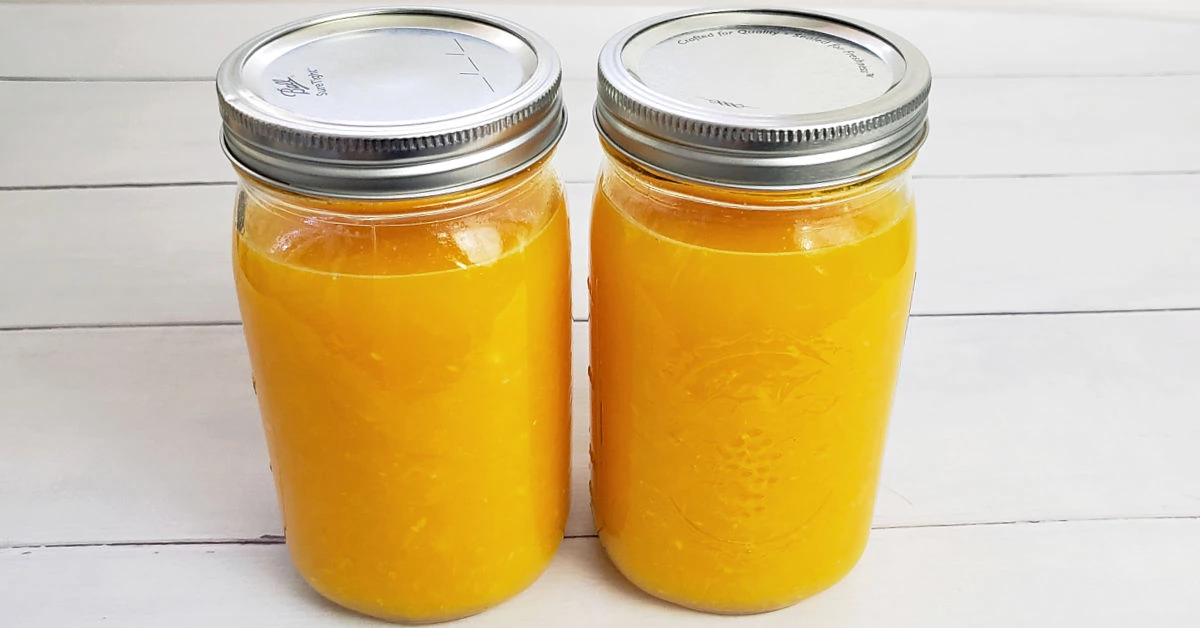
Step 5: Ferment Orange Juice at Room Temperature
What you’re looking for over the next 24-48 hours is for the juice to become bubbly and for pressure to build in the jar due to the release of carbon dioxide. You may need to burp the jar a few times to prevent too much pressure from building up.
The bubbles will separate the juice from the pulp, so that’s a good sign that the fermentation process has worked. After it’s done fermenting, you can either strain the pulp or leave it. I personally prefer the version without pulp (I usually prefer less pulp in my orange juice).
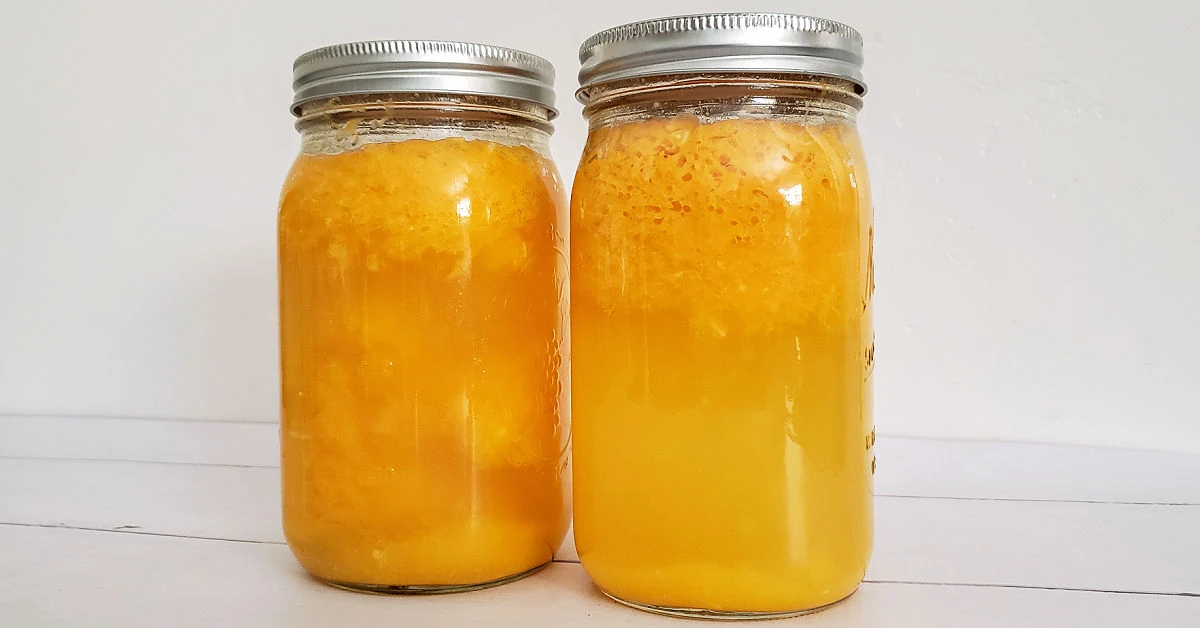
Step 6: Strain, Refrigerate and Serve
After it’s the juice has fermented and you’ve strained it (if you want to), it’s time to refrigerate it. Once it’s chilled, it’s time to serve and enjoy.
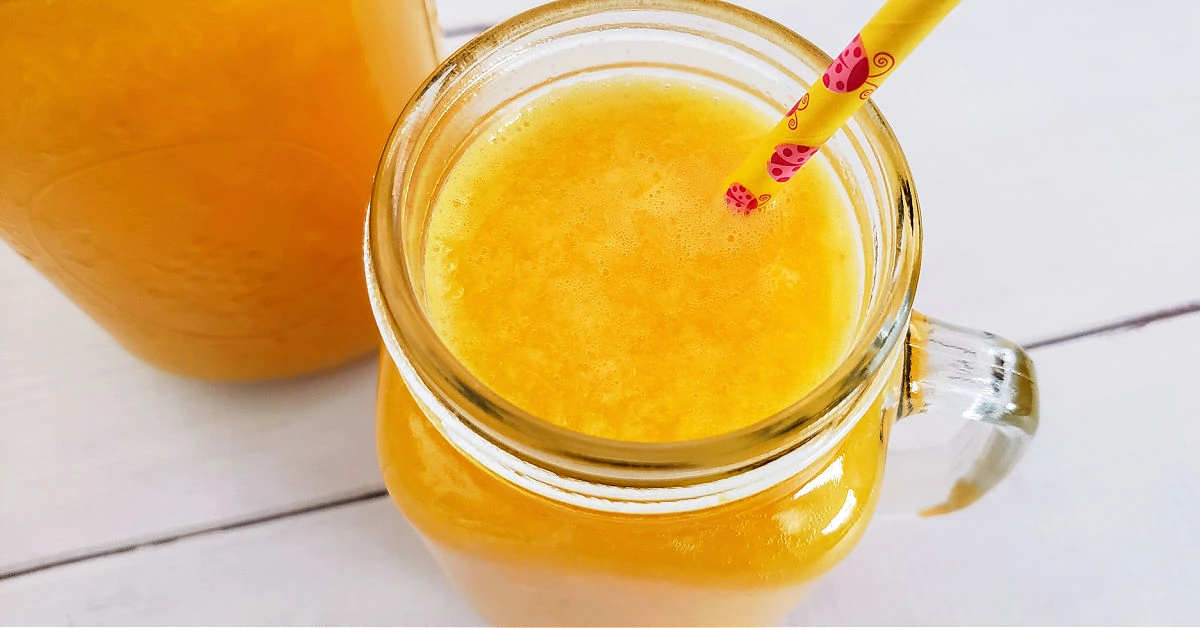
Tips for Making Fermented Orange Juice
Answers to all of your questions about making fermented orange juice at home, including tips and variations.
What does fermented orange juice taste like?
It has its very own flavor! The sweet taste of orange juice disappears during the fermentation process. What you’re left with at the end is a bubbling, slightly tart beverage. It’s almost like a mimosa, without the champagne of course, and can also be compared to the flavor of Orangina.
Why drink fermented orange juice?
While we all know that orange juice is rich in vitamin C, when you ferment it, you get additional benefits. The fermenting process of foods creates good bacteria that overpower any harmful bacteria… probably the complete opposite of what most people might think.
Making your own fermented fruit drinks is more affordable than buying them at health food stores. And it’s a great alternative to drinking soda pop with too much sugar.
I like to make all of my fermented drinks rather than buying them, including kombucha, water kefir, ginger ale, orange juice and more.
What if it ferments too long?
The flavor will become very tart and it will have an off odor if you let it go too long after the end of the fermentation process. Sometimes you can rescue it by doing a second fermentation and adding some more sugar and juice, but most of the time I dump it if it goes too long.
Especially during the warm summer months, it’s easy to let it go too long. One time I tasted it before bed and it was too sweet so I let it continue fermenting. By morning, it was already over fermented. So be sure you’re checking the jar at least a couple times a day.
Where to get starter culture?
I like to buy my all of starter cultures from Cultures for Health. They have pretty much every type of starter culture you might want. In addition to getting my vegetable starters from them, I also get my gluten free sourdough starter, sour cream starter and yogurt starter from them too.
Is starter culture necessary?
A lot of people ask this question because they’ve noticed that sometimes juice in their fridge will ferment on its own, without the aid of a starter culture. While wild yeast is a thing (that a lot of people rely on when making sourdough), when orange juice ferments on its own, it’s often due to bacterial contamination.
While there are “good” bacteria, you don’t know what type of bacteria started the fermentation process, so it could be “bad” bacteria. My personal experience is that it’s a bad idea to drink spontaneously fermented juices since, even ones with a low pH like OJ, since you don’t know what’s growing in there.
One good alternative to a starter culture is whey, which is leftover when you make and strain things like yogurt and cream cheese.
Best type of orange to use?
It’s a good idea to choose organic oranges if you can, and fresh sweet oranges work best since the yeast feeds on the sugar to create the carbon dioxide bubbles. Flavorless OJ will lead to a flavorless fermented drink, so choose good oranges.
Why store bought OJ can’t be used
You can only make this orange beverage with raw juice. OJ from the grocery store has been pasteurized and no longer contains enzymes to be fermented.
Best temperature for fermenting orange juice
You’ll want to leave the jar at room temperature to ferment. However, we all know that temperatures vary throughout the year.
So it’s important to know that if it’s too cold, it won’t ferment. If it’s too warm, it’ll over-ferment. I find that around 70˚ F is the ideal temperature.
Can you ferment other fruit juices?
You can ferment pretty much any raw juice. Try it with fresh pressed grape juice, cranberry juice, pineapple juice, grapefruit juice or even lemon juice. I love using pineapple juice!
Another popular fermented drink, albeit made from vegetable juices, is beet kvass.
Uses for leftover orange peels
If you make this fermented orange juice recipe, don’t forget to use the entire orange! That means using the leftover orange rind to make something like my DIY Citrus Infused All Purpose Cleaner!
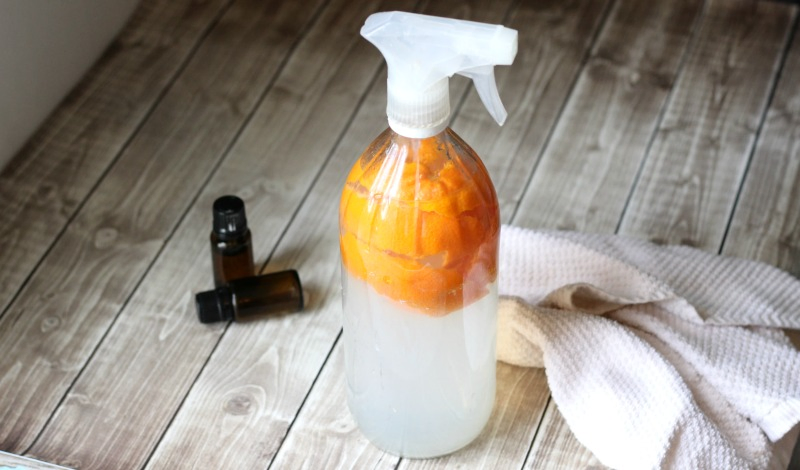
Does fermented orange juice contain alcohol?
The fermentation of orange juice naturally creates a small amount of alcohol, the same as when you brew kombucha at home. To make sure it doesn’t contain too much alcohol, you can test the level with a hydrometer from a local brew store.
Where to learn more about fermented foods?
One of my favorite resources for learning about fermented foods is the book Nourishing Traditions. Another great book with lots of tested recipe is Wild Fermentation.
If you want to see more of my recipes for fermented foods, here are a few of my favorites:
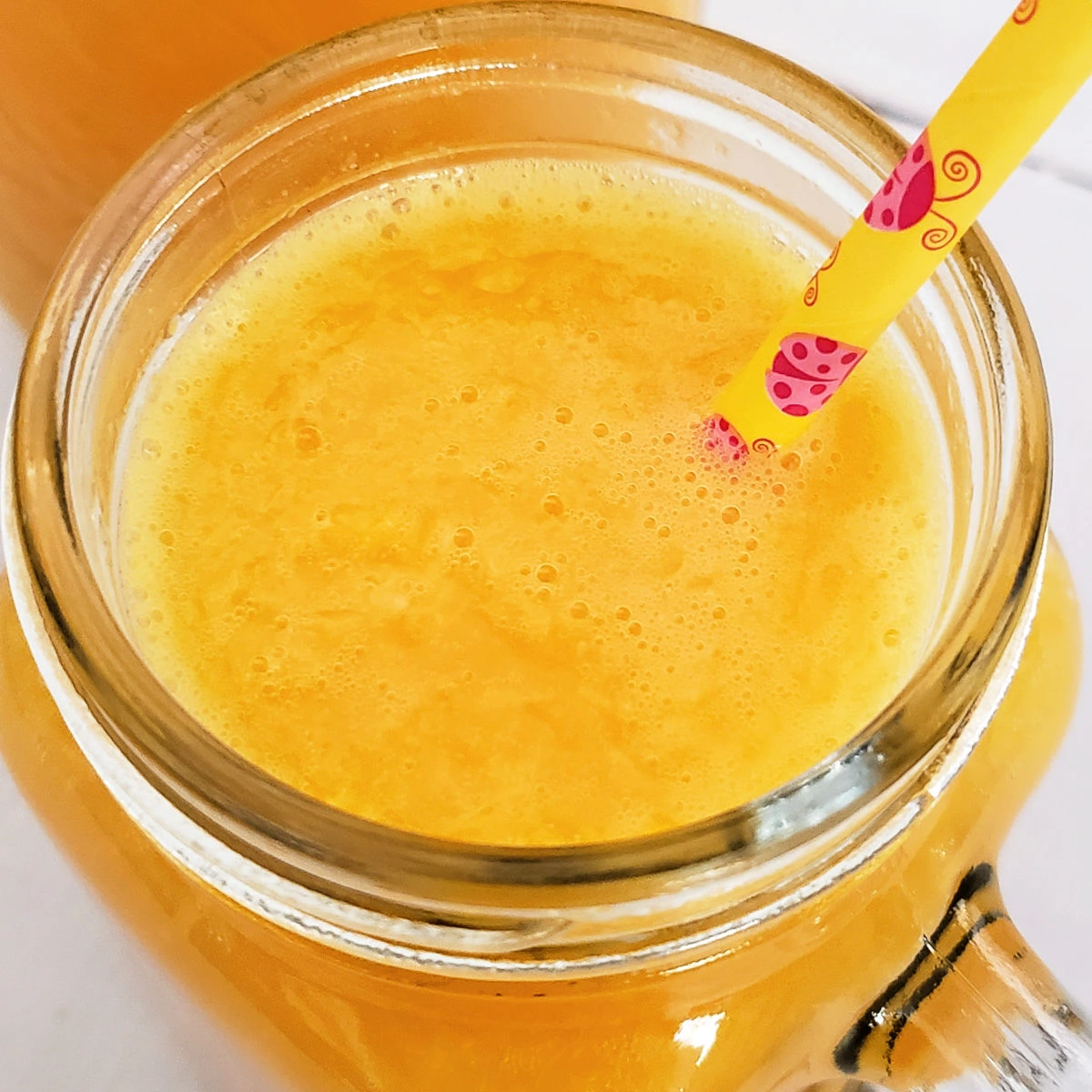
Fermented Orange Juice Recipe
Ingredients
- 6 cups orange juice - fresh squeezed
- 4-6 tablespoons starter culture - prepared per package instructions
- 1 cup filtered water - room temperature
Equipment
- Quart sized mason jars
- Whisk
Instructions
- Squeeze orange juice and add about 3 cups to each mason jar.
- Prepare vegetable starter culture per package directions.
- Add about ½ cup of filtered water and 2-3 tablespoons of culture starter to each jar of orange juice and whisk to combine.
- Screw the lid on the jar, then set it somewhere warm yet out of sunlight.
- Let the jar sit at room temperature for 24-48 hours until it’s bubbly. You may need to burp the jar to prevent too much pressure from building up.
- Once it’s bubbly, refrigerate and serve!

